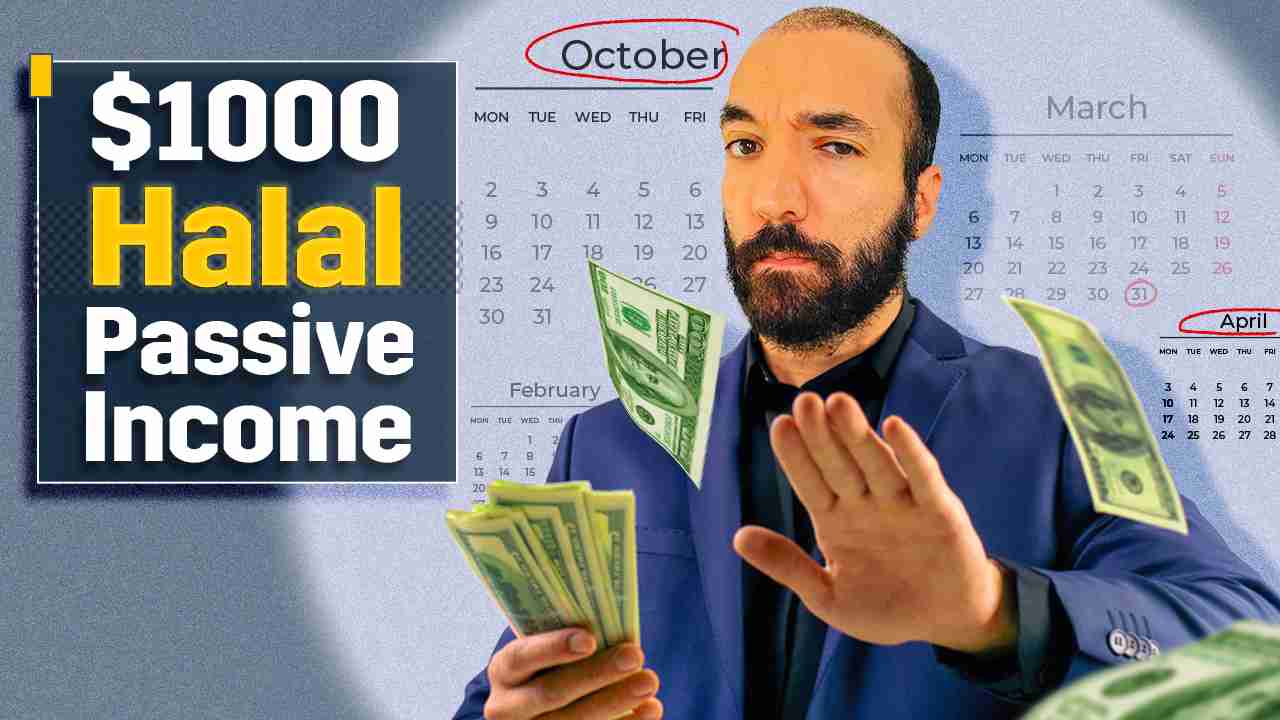Dividends are voluntary distributions that companies make to shareholders. They are halal to earn so long as the company making the dividend payments is halal to own.
To receive dividends, all you need to do is to own the stock of the company paying them.
In this article, I’m going to walk you through how you can construct a portfolio of dividend-paying stocks that will pay you $1,000 per month or any amount that you choose.
Where to Start?
The first step in your dividend journey is to open a brokerage account, basically, the place where you’re going to buy the stocks that pay you dividends. I typically recommend M1 finance for my U.S.-based readers because it discourages frequent trading.
Perhaps equally important to the brokerage you choose is the type of account you open. Remember, with dividends, you are receiving money, so there are tax considerations you have to account for. If you’re building a dividend portfolio for your retirement, it may make sense to build your portfolio in a tax-advantaged account so that you won’t have to pay any taxes on your dividend distributions.
In the U.S., dividends you earn in a Roth IRA are tax-exempt (because contributions to a Roth are done after tax) whereas, with a Traditional IRA, taxation applies when you withdraw money from your account.
Outside of the tax-advantaged accounts, for qualified dividends, you're taxed at capital gains rates, which are typically lower than the rates of ordinary income. The shares must be held for 60 days for common stock and 90 days for preferred stock to be considered qualified dividends.
How Much Do You Have to Invest to Make $1,000 per Month in Dividends?
This depends on the Dividend Yield of the companies you invest in.
Each company has a different dividend yield. It is pertinent to state what a dividend yield is:
The dividend yield is the annual amount of dividends paid by a company divided by the company’s stock price. For instance, if a company pays $5 per share every year in dividends, and the current stock price of this company is $100, its dividend yield is 5%.
The higher the dividend yield, the riskier the company. This is because a higher dividend typically suggests that management thinks owning their stock requires a larger incentive.
An example of the estimation is:
I assembled a portfolio of 10 stocks I’m comfortable investing in from a halal standpoint, which has a dividend yield of close to 3.3%. Now with a yield of 3.34% on the entire portfolio, to earn $1,000 a month, you need close to $360,000.
To lower this required amount, you need to increase the dividend yield. You can do so by going through the list of 10 companies and adjusting the weights so that you have lower weights for any stocks with dividend yields that are lower than your target dividend yield and higher weights for stocks that have yields above your target.
If you adjust the weights so that the yield is 4% then the required amount to have invested falls to $300,000. Just remember, higher dividend yields and fewer stocks typically come at the cost of lower diversification and higher risk.
Also, keep in mind that dividends are not guaranteed distributions. A company can decide to discontinue them, and the higher the dividend yield, the more likely a dividend reduction becomes.
Setting Goals
If you want $1,000 per month in dividends, you need to invest between 300 and 400K, depending on the dividend yield of your portfolio. Many of us may find this target rather daunting. So start with something closer to reach.
Using the spreadsheet I created, if you shoot for $100 per month in dividends, using the portfolio I created, you need $36,000 to make $100 per month without spending any effort at all.
Dividend Reinvestment
While you’re building up your dividend portfolio to reach the rate of monthly payouts that you aspire for, make sure to turn on dividend reinvestment. This is to ensure that any dividends you receive will be reinvested automatically so that you can buy more shares in your portfolio and earn more dividends.
*If you’re using the M1 finance app, you can automatically reinvest dividends by flipping on the auto-invest option.
Get Started and Invest Regularly
Figure out how much you can save each month so that you’re not only reinvesting dividends, you’re also contributing every month to your portfolio. The way to go about this is to track your expenses, cut costs where you can, and increase your income so that you can increase your contributions to your portfolio.
The best thing about the dividend snowball is that the larger it becomes, the faster it grows. Getting it started is the hardest part.
Conclusion
Consider following the Practical Islamic Halal Finance dividend portfolio for inspiration on where to start.

Leave a Reply